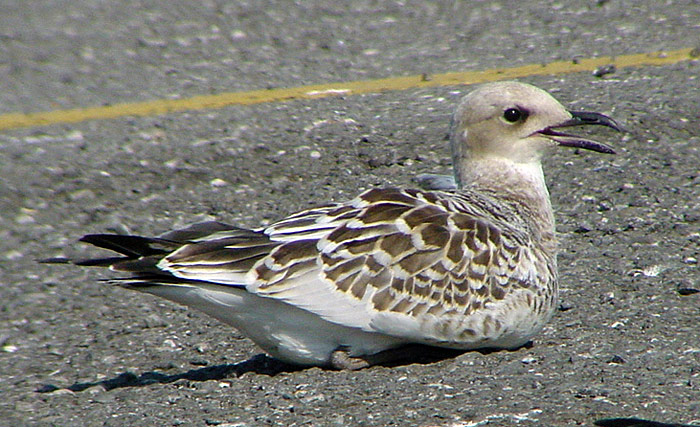 Mediterranean Gull (L. melanocephalus)
Mediterranean Gull (L. melanocephalus)
(last update:
Mediterranean Gull juvenile, July 28 2001, Le Portel /Boulogne-sur-Mer, France (50.42N,1.34E).A fresh bird in complete juvenile plumage from the end of July.
The full juvenile plumage lasts only for a few weeks in the majority of Mediterranean Gulls. This bird from Le Portel at the end of July has dropped some scapulars but no new grey feathers are visible yet. In most perched birds the very pale greater covert are clearly visible. There is already some wear to the white tips of the lower lesser coverts. The scapulars and mantle feathers are deep brown with an inconspicuous dark sub-terminal band and a silvery-white fringe, creating a scaly pattern. On this bird that pattern is slightly broken up due to missing scapulars. The pattern of the scapulars is repeated on the lesser coverts, lower lesser coverts, median coverts, inner four greater coverts and upper tertials which also show brown centres and neat silvery-white fringes. They contrast strongly with the central and outer greater coverts, which are predominantly grey, forming a pale bar in the dark inner-wing in flight, but as can be seen here also on resting birds. Note that the comments on moult are based on observations of juveniles from and in Western Europe in early autumn. More easterly fledged Mediterranean Gulls may postpone their moult to first winter until later in the autumn and very fresh looking juveniles may be encountered well into October.
|
